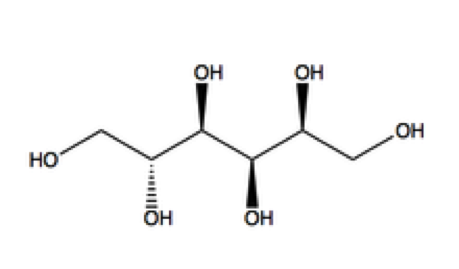
Stone fruits, pears, and cherries all contain high levels of polyols
You may have noticed the ‘polyol’ category of FODMAPs within the Monash University low FODMAP diet Smartphone app. It combines two common sugar polyols that can trigger IBS symptoms, sorbitol and mannitol. These are naturally occurring sugar polyols found in a range of fruits and vegetables including stone fruits and mushrooms. There are other sugar polyols that are added to commercial products such as chewing gums, mints and diabetic products. These include xylitol and isomalt. You may have noticed the warning that comes on some of these packages “Excess consumption can have a laxative effect”.
 Sorbitol
Sorbitol
 Mannitol
Mannitol
Like fructans and GOS (the “oligo’s”), we have had several requests from the public asking us to separate the polyol group in the app into sorbitol and mannitol. Some people have had breath testing for one or both of these sugars indicating different levels of absorption, but unfortunately this does not indicate whether the sugar is contributing to your symptoms. You may not need to avoid all polyols to manage your IBS, but you might find occasionally that they upset you, depending on your level of tolerance.
Sorbitol and mannitol (and other sugar polyols) are slowly absorbed along the length of the small intestine and often are malabsorbed when the sugar reaches the large intestine for fermentation. Just like fructose, however, regardless of whether the sugar polyols are completely absorbed or not, they can have effects in the gut. They will have an osmotic effect, dragging water through the bowel and can be fermented by intestinal bacteria which produces gas. So the gas and water changes that contribute to symptoms of bloating, pain and altered bowel habit can occur whether the sugar polyol is absorbed or not. Whether you get symptoms will probably depend on the amount of polyols consumed, what else you have eaten with it, whether you have had other FODMAPs that day and how sensitive your gut is at the time.

Avocados are very high in the Polyol Sorbitol
We list the polyols together on the app because they can have the same activity in the gut, but when you click on a food that is high in polyols, the detailed information will let you know which polyol the food contains. Remember to try different foods within each FODMAP subgroup as you may tolerate one but not another irrespective of which polyol the food contains.